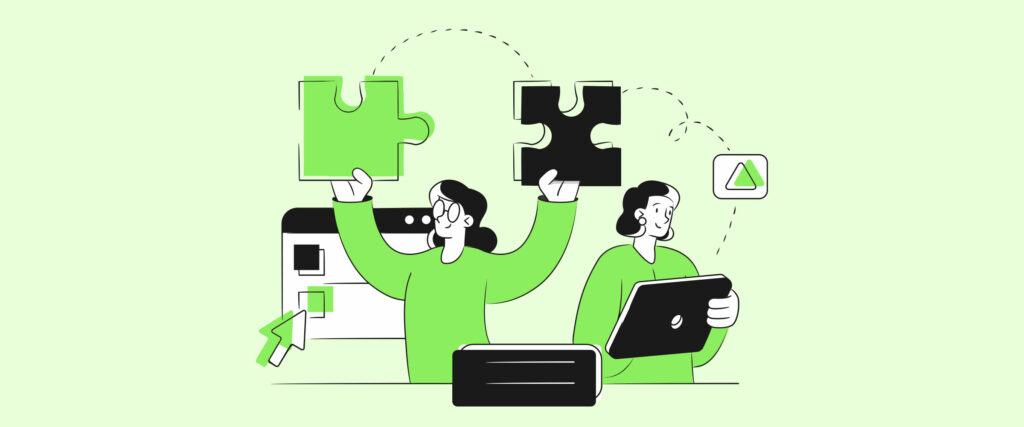The backdrop –enterprise application platform (EAP) matter more than ever. I contributed a piece to the Q1 2022 issue of ERP Today on the importance of EAPs and their key criteria that matter. No need to repeat them here but you can take a look at the article in the main magazine. EAPs have gotten stronger across the board at all vendors, and ServiceNow’s Now Platform is no exception. Let’s dive a little deeper into the Now Platform.
Key Now Platform capabilities
At its core, the Now Platform enables process automation across different enterprise systems. At its core it is the App Engine that powers this process automation. Core capabilities, with e.g., RPA as a prominent 2021 innovation, and out of the box features (e.g., business components and channel support with chat, web, mobile and IoT) support the execution of the code of the app engine. But ServiceNow is doing more than just the development of process automation, it also helps enterprises on the discovery of processes as well as their tracking and optimization. Underlying the overall platform is support for AI and ML capabilities, that e.g., enable smart recommendations and NLP capabilities. An Integration Hub with vendor supported integrations to third party products makes it easy to integrate with the created process automation. The Now Platform services all key user types for process automation, first and foremost business users, but also process analysts, automation developers and IT Operation.
A key capability of the Now Platform is to rapidly create process automation artefacts (this is the code that powers the automation), allowing for low code / no code creation as well. At the base of the capability is the ability to use process automation services that the platform has (e.g., workflow, ML, AI, identity, reusable data models etc.). On top of that the Now Platform provides pluggable process automation components, starting with key patterns and objects (e.g., Case, Task, Asset etc.). In combination with end user services (e.g., self-registration) and common services (e.g., anomaly detection) as well as knowledge worker services (e.g., playbook) it is easy and fast to create rich process automation artefacts. Once created, the Now Platform allows to operate these artefacts across process experience components, like mobile, web, email etc. Lastly there are several workbenches that support the different users building process automation artefacts (e.g., App Engine Studio, Process Automation Designer etc.).
The secrets of the Now Platform success
Let’s look a little at the key capabilities that from an architecture perspective are the secrets of the Now Platform’s success:
• Get the fundamentals right. The Now Platform has at its core been operating the same since the start of ServiceNow. Compliments go to the original architects to build a platform that has proven its scale and future readiness not only till today, but also the foreseeable future.
• Focus on universal processes. A key success factor for platforms is that they support a universal process, really well. As the process can be applied to multiple use cases, the foundational correct design just gets reapplied and repeated. Platform scale from very good support of a universal process is the winning strategy and it is delivering for ServiceNow customers.
• Allow for composition. Assuming that the platform does not have to provide out-of-the-box processes that usually do not stand the test of time triggered by changing business requirements and instead focus on composable processes, is key. ServiceNow has done so with its Now Platform and that has paid off over the last years.
• Scale the platform. Needless to say, scale matters to future-proof a platform, way too often enterprise automation vendors need to re-platform because of platform mistakes. That always creates a pause for the development of functionality, which is highly unwelcome in the customer base given rapidly changing process automation requirements.
• Open for extension. The premise that not all can be built into a platform is a very important one, and with it comes the openness and readiness for extensibility. That not only gives platforms a longer lifespan but also opens the door for third party additions and customer extensions. ServiceNow has foreseen this in the Now Platform, and it is one of the key success factors for the platform.
Obviously, the architects of the Now Platform have followed all the above platform success criteria, as the Now Platform is alive and well. It has added key AI and ML capabilities with ease and has expanded into the RPA space. Remarkably, it has also been able to keep up with the rapid growth of ServiceNow, not only from a customer count perspective but keeping up with the requirements of a more global, international platform. Moreover, the massive growth in usage at single customers has been well accommodated by the Now Platform as well. So, all in all compliments to the original architects who created the Now Platform, but also to its previous and current stewards, for successfully expanding it.
The Takeaways
Platforms matter for software success, for both business automation as well as process automation. ServiceNow’s Now Platform has been proven over time, as it has followed successful platform criteria. This gives CxOs the peace of mind they need to run their process automation projects with ServiceNow. And given the rapid expansion of use cases that ServiceNow has shown in the last years, there is a high degree of confidence that the Now Platform can handle the necessary future growth – both from a functional and growth perspective. What is the ultimate knighthood for the Now Platform, is the fact that it is able to support additional use cases with ease, something the original platform architects could not foresee. Even more a testament of successful abstraction of automation capabilities.





